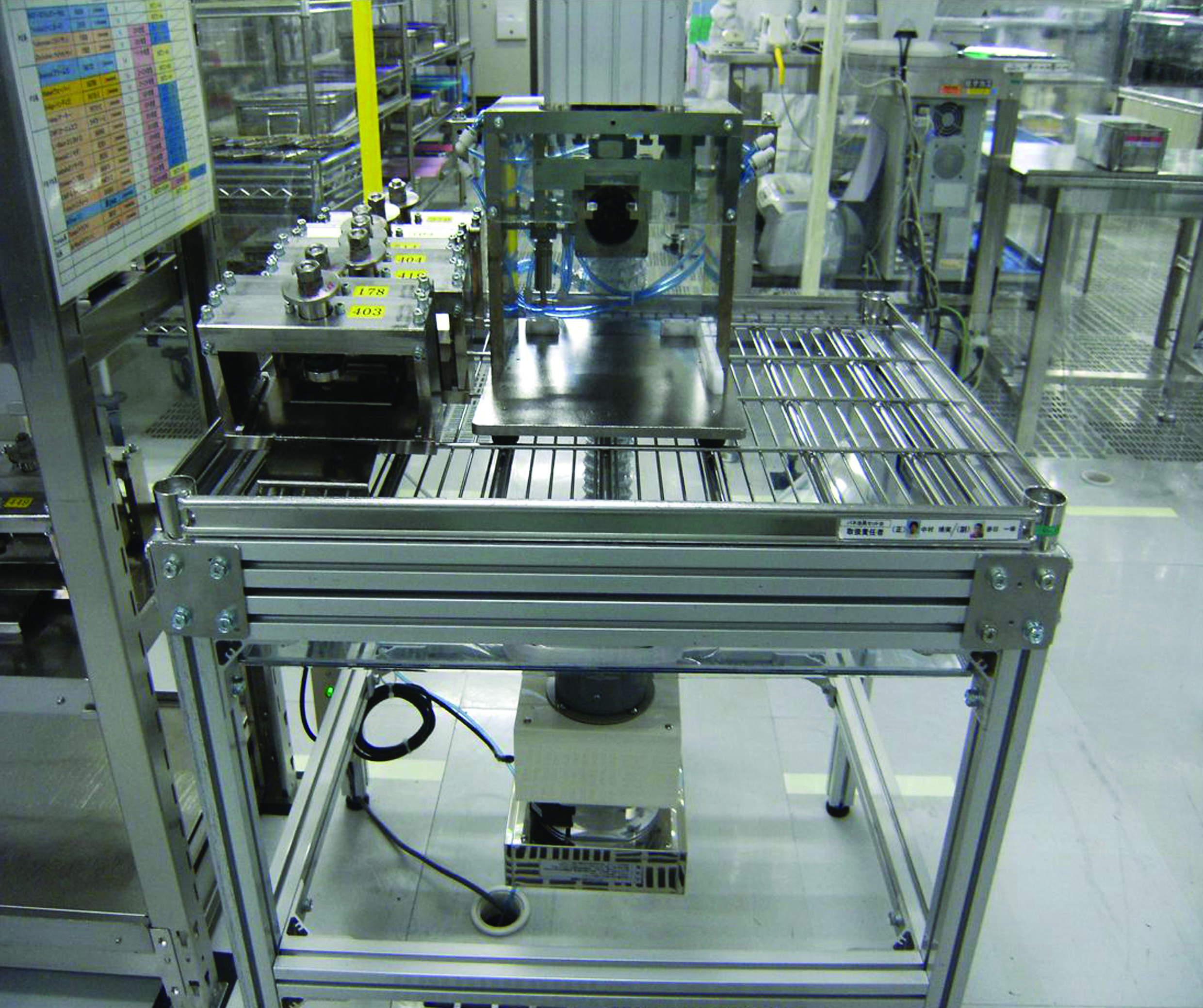When Epson launched a project to revamp the processes used for manufacturing inkjet printer printheads and ink cartridges to reduce its environmental impact, one of the areas it looked at was the use of air in cleanrooms.
Its cleanroom air conditioning systems used a tremendous amount of energy. The outside air taken into these systems had to be heated or cooled and humidified or dehumidified to keep the temperature and humidity of the cleanroom constant. The air also had to be filtered to remove airborne particles and other contaminants.
Given the energy and expense of treating air, Epson implemented a variety of projects in its cleanrooms to use the air more effectively and efficiently.
Clean air flows from the ceiling and is exhausted from the floor. Exhaust from machinery and equipment is expelled to the outside via ducts, and an equivalent volume of new air is drawn in from outside. Cleanroom air conditioning and handling systems account for about 70% of the total energy consumed at one manufacturing site looked at, and the expulsion of more air than necessary is a waste of money. This prompted the project team to introduce actions to reduce exhaust.
Installation of compact blower filter units: In the past, all exhaust from machinery and equipment was vented to the outside through ducts. The team decided to use compact exhaust units, called blower filter units (BFUs), instead to exhaust the air. BFUs have a built-in intake fan and special filter. They can be installed over the exhaust port of machinery to remove particles from the exhausted air. These BFUs allow machinery and equipment exhaust formerly released to the outside as waste to be re-released into the cleanroom, sharply reducing the amount of air vented to the outside.
Since the air that passes through a BFU is the same temperature and humidity as the air in the rest of the cleanroom, it does not require further conditioning. The BFUs thus save considerable energy because they allow the volume of air exhausted to the outside to be slashed, meaning that less fresh air from outside needs to be taken in and treated.

Also, since the major construction work required to install ducts is not necessary, the BFUs save construction costs and do not generate the level of waste that end-of-life ducts do. Moreover, machinery and equipment are easier to move when equipped with BFUs rather than ductwork, so the floor layout can be changed without major expense.
Because machinery and equipment can be moved as needed to accommodate fluctu-ations in production volume, space can be used more efficiently. The energy saving on the seven pieces of equipment was 23,532kWh/year, or 8.9 tons of CO2/year.
Ventilating diaphragm vacuum pump exhaust through subfloors: In this example, the flow of air in a cleanroom is efficiently used to save energy and money. Diaphragm vacuum pumps generate a lot of particles, so ducts were connected to exhaust ports and the exhaust from these pumps was being vented to the outside. The strategy taken here was to cover the entire pump with a plastic cover, and place the pump on a perforated grating. Even without an exhaust duct, exhaust from the covered pump efficiently flows down to the subfloor, instead of spreading into the ambient atmosphere.
Savings in energy were 23kWh/year and in terms of CO2, 0.1 tons/year.
Measurements to find the optimum level of exhaust: A fixed amount of air constantly flows within a certain apparatus. There were six identical pieces of apparatus, and the level of exhaust from each was measured. The measurements showed that the exhaust volume varied from 10m3/h to 69m3/h, meaning the apparatus with the highest exhaust volume was exhausting seven times more air than that with the lowest volume.
Measurements were taken to determine the lowest level of exhaust that could be maintained without adversely affecting quality. Once it was established that the lowest exhaust volume was perfectly adequate, the exhaust volume of each apparatus was set to 10m3/h. The cumulative effect of these actions yielded energy savings (on six pieces of equipment) of 2,193kWh/year and 9.3 tons of CO2/year.
The efforts described have served to sensitise employees to the concept of waste and have spawned spontaneous efforts to eliminate it in all facets of operations, such as by shutting down machinery when not in use. Staff noticed that the more routine the operation, the more likely hidden waste was to be present.




